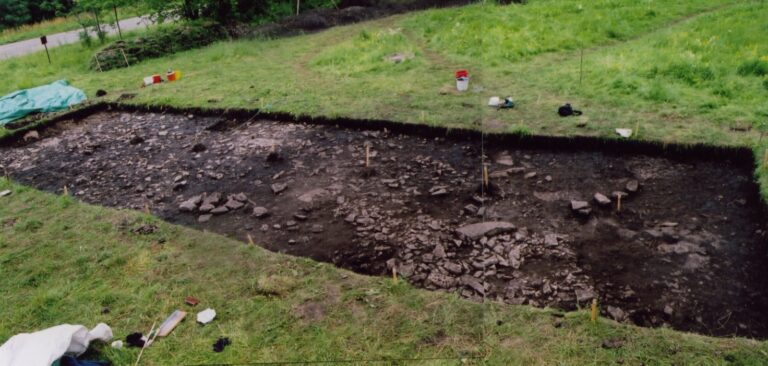
Harbour sites from Viking Age Estonia have been archaeologically investigated mostly on the island of Saaremaa and excavated more thoroughly at four locations – at Tornimäe, Viltina, Pällamõisa at the bay of Sutu, and most recently at Mullutu.

The harbour of Tornimäe (meaning Tower Hill; on historical maps also Linnamägi, Town Hill) was located at a strategically well-chosen place which offered a good view of the Suur Strait (between the present-day islands of Saaremaa and Muhu) and the strait between the main island (former Kuresaar) and Kõrkvere (present-day peninsula). It was a suitable landing site for Viking Age vessels and allowed easy control of the traffic along the waterways from Gotland to the Gulf of Finland. Although Tornimäe can be considered connected with the Eastern Way, or Austrvegr, the finds are mostly local or originate from the neighbouring regions, thus not indicating any wide-scale international trade.
The abandonment of the Tornimäe harbour around the year 1000 may have been caused by the ongoing crisis in the Viking Age eastern trade, or prompted by the land mass elevation. The later harbour was located several hundred metres closer to the sea than the original Viking Age site. The medieval period saw the most important tax collection centre in the eastern part of Saaremaa, known as Uuemõisa, established near Tornimäe.
In the early 19th century, local peasants reported wooden palisade remains along the slope of the Tornimäe hill. The site was first excavated in the 1960s. Exact maps with contour lines being unavailable during the Soviet time, head of the excavations the archaeologist Aita Kustin interpreted the site as an ordinary Viking Age settlement, without realising its location on the one-time coast.

In the beginning of the 2000s, Marika Mägi carried out additional excavations on Tornimäe. The excavation cut remains of a log house and some scattered fireplaces. Probable hearths were already discovered during the excavations of Kustin. However, not a single building with oven, characteristic to Estonian prehistoric settlements, has been recorded in Tornimäe so far. It may be that there were none since the site was only in seasonal use, and during the summer months when the sea was navigable, there was no need for heating. When the sea wasn’t sailable anymore, inhabitants left the harbour site as well.


The cultural layer of the Tornimäe site was intense, even though later farming had heavily impacted it. Potsherds were the most abundant finds, but also numerous metal artifacts like jewellery, weapons, and tools came to light. Additionally, boat rivets and possible bead-making items, as well as some tools denoting other handicrafts were found. A great number of bones of domesticated animals and fish were recorded, suggesting that the site also functioned as a fishing harbour. Items demonstrating foreign relations consisted only of some foreign potsherds and ornaments.
The material found at Tornimäe is remarkably similar to the finds on the Pöide hillfort that is located 7 km away from it.





